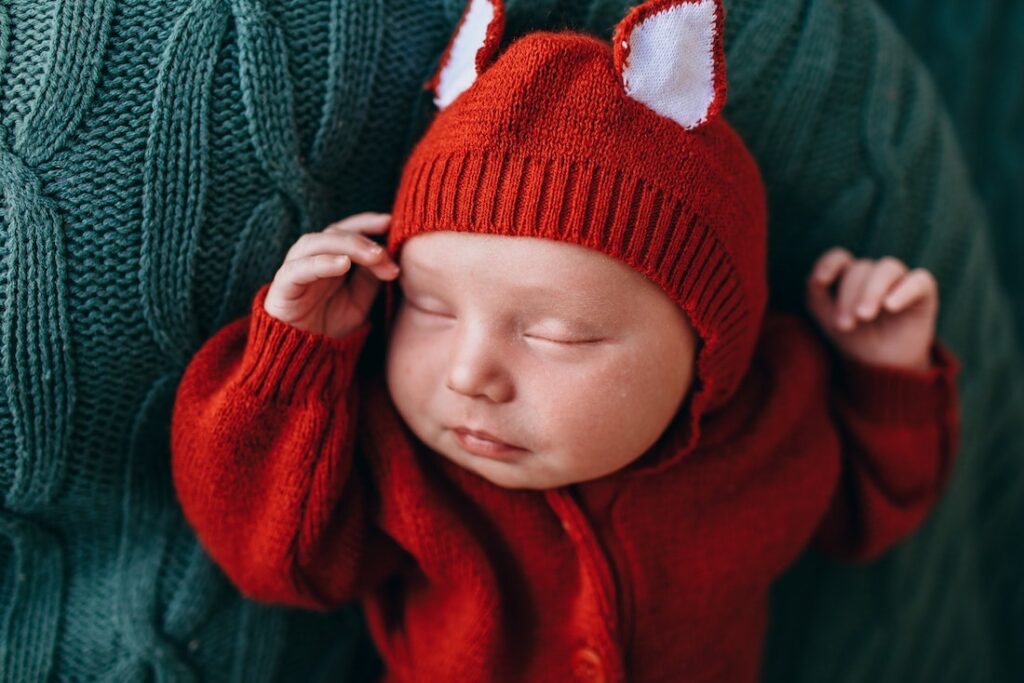
Juggling between household chores and caring for the baby isn’t an easy task. A mamaroo, therefore, plays a vital role to most mothers and nannies. By swinging and rocking the baby, the infant soon falls asleep in the mamaroo.
That’s where the question comes, can babies sleep in mamaroos? And how safe are babies sleeping in rockers and swings?
What’s a Mamaroo?
The MamaRoo is a high-tech infant seat that serves four functions. It functions as a rocker, swinger, and bouncer for an infant.
Besides you can adjust its speed and seat inclination angle right from your phone.
Is it Safe to Let a Baby Sleep in a Mamaroo?
An infant can only enjoy a safe and healthy sleep when placed in the right setting. That includes sleeping on a flat and firm surface.
Every year over 3000 infants in the US succumb to sleep-related deaths such as sudden infant death syndrome (SIDS), accidental suffocation, and strangulation in bed.
So, whenever your baby falls asleep in a mamaroo or other swings, move the infant to a safe sleeping surface such as a crib.
In other words, it is not safe for babies to sleep in mamaroo. Yes, some parents get away with the act, but that doesn’t make sleeping in a swing or rocker safe.
Even under adult supervision, it still isn’t safe for an infant to sleep in a mamaroo. Most often the baby doesn’t display any signs and symptoms when struggling for life.
What are the Dangers of Letting Baby Sleep in a Mamaroo?
Risk of Suffocation
An infant’s neck muscles are ill-developed at birth. That means such a baby cannot hold his head high without support.
Many swings and rockers position the baby at an inclined angle. When in such a posture if the infant’s head slums forward it can cause suffocation, otherwise known as asphyxia
Risk of SIDS
The main purpose of a mamaroo is to rock, soothe and so calm the baby. For that reason, it often has a soft and comfortable surface.
However, the ideal sleeping surface for a baby should feel firm and even. A swing thus falls short of such description. It’s hence not the ideal sleeping platform for an infant because it enhances the risk of SIDS.
Insufficient Oxygen
 When babies sleep on their noses there is a danger of the infants breathing insufficient oxygen. In such instances, the infant is more likely to rebreathe more of the carbon dioxide than oxygen.
When babies sleep on their noses there is a danger of the infants breathing insufficient oxygen. In such instances, the infant is more likely to rebreathe more of the carbon dioxide than oxygen.
The extra comfortable feeling a mammaroo offers encourages deep sleep for an extended period. An infant is thus more likely to turn on one side, sleep on the nose or press the nose against the side of the swing such that she gets inadequate oxygen.
When you make it habitual for your baby to sleep on mamaroo, the insufficient oxygen supply impairs his development.
Spine Development Issues
The design of most swings and rockers is that they encourage infants to sleep mostly on their backs than tummies. But in normal circumstances, a baby also needs tummy time also.
Sleeping on the stomach encourages the infant to exercise more by trying to lift the head. Such an exercise strengthens the neck muscles and the spine.
Sleeping on the back denies the baby such an opportunity and thus leading to spine development problems, otherwise known as infantile scoliosis.
Injuries
As a baby advances in age, the urge to explore the surroundings becomes irresistible. Hence the infant can try to crawl out without your knowledge anytime and thus cause an accident.
On the contrary, a flat even surface such as a crip encourages the urge to crawl away and reach out to other play items without danger of falling down.
Inability to Sleep on Their Own
Most babies find the rocking and swinging motion of the mamaroo pleasant. For that reason, some mums make it a habit in using a swing when they want the infant to drift to sleep.
And with time such a baby develops a habit of falling asleep only when in the mamaroo. Breaking away from such a circle is never an easy task.
Reducing the Hypoxic Arousal Response
In normal circumstances, babies have the instinctive behaviour of waking up when distracted or something goes wrong. Such a hypoxic arousal response is a safety provision.
However, the swing motion of the mamaroo, induces deep sleep in an infant. As a result, it greatly reduces such hypoxic arousal responses.
Impaired Emotional Development
Newborns should spend more time in the hands of their parents. The physical contact the baby makes with the parent or guardian aids in bonding and boosting emotional security.
Letting your infant spend more time in a mamaroo than in your arms interferes with his emotional development.
How to Reduce Your Baby’s Over Reliance on the MamaRoo
 It’s possible to cut down your infant’s dependency on the mamaroo to a safe and acceptable duration. However, it doesn’t happen overnight, but rather it’s gradual. So be patient and consistent with your effort.
It’s possible to cut down your infant’s dependency on the mamaroo to a safe and acceptable duration. However, it doesn’t happen overnight, but rather it’s gradual. So be patient and consistent with your effort.
Here are a few suggestions on how to go about it:
When the baby gets drowsy, don’t let him fall asleep in the Mamaroo. Instead, shift him to the crib. For easy change over you can place the swing in the baby’s bedroom.
Also, scale down the mamaroo’s movement or swing speed by step everyday. Do that till she learns to fall asleep without any rocking motion.
Furthermore, let the mamaroo be a set up for play. You can introduce fascinating sounds, and games and install bright lights in that room.
Also, instead of over relying on the swing, try carrying her in your arms as you sing, and rock him to sleep.
Conclusion
Busy mums understand the importance of having a mamaroo. It can ease your hands off the baby and let you accomplish a chore.
But for safety reasons follow the manufacturer’s instructions and don’t let your infant sleep in the mamaroo. It’s okay to let your baby stay in the swing for a few minutes. When the infant cries it can soothe and rock her to sleep.
But as soon as she gets drowsy, take him to a safe sleeping place such as a bassinet or crib.




